Viknes 10 Review: Award-winning 35ft triple cabin wheelhouse cruiser
Built for all weathers, this triple cabin 35 footer packs in the features. Greg Copp puts her to the test.
Klissarov Design were founded two years ago to provide design services to automotive OEMs as well as eVTOLs and yachts. But their founder, Emmanuel Klissarov, has a 15-year history in professional car design for the likes of Renault and Mercedes-Benz. His latest project, ACRO, came about as a result of his interest in cycloidal rotor technology. This, in turn, led him to communicate with Austria-based company CycloTech, the main developer of the technology, in search of their expertise and insight. Klissarov’s motive? To further advance ACRO’s technical development, which he believed had the makings of a revolutionary new half-boat, half-aircraft – one aimed primarily, but not exclusively, at the international superyacht market.
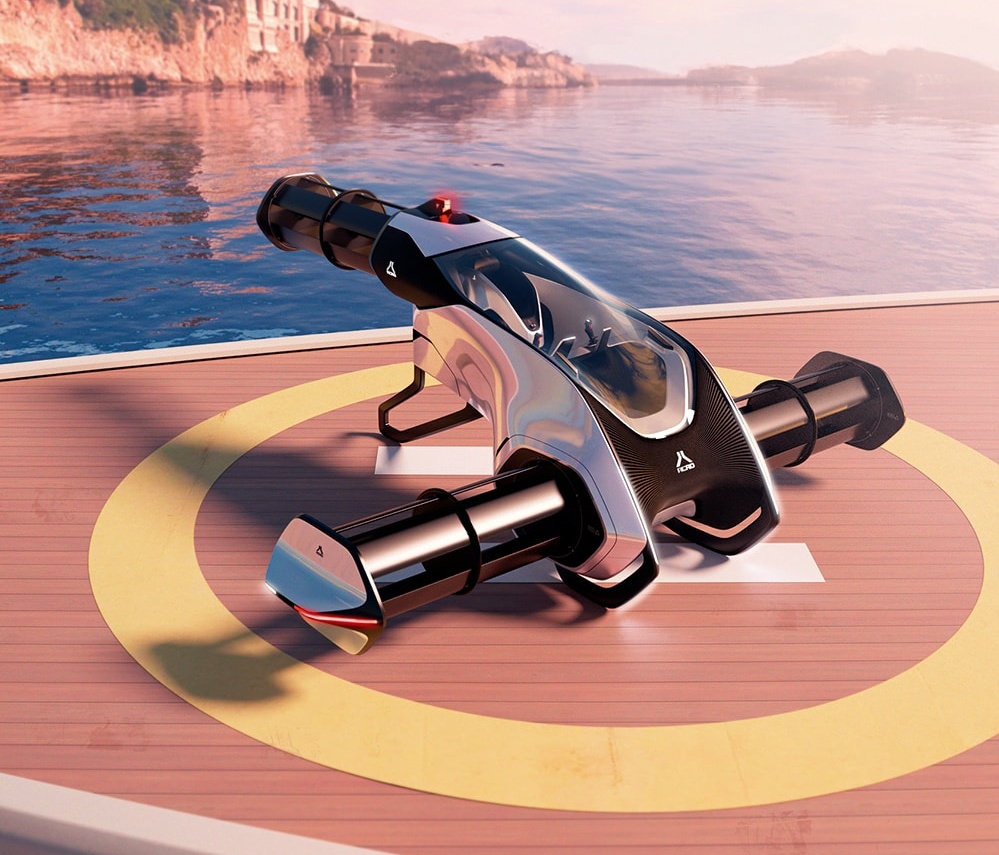

However, being able to certify aircraft designs and obtain the necessary licences granted for full development is a pretty involved affair. In fact, it’s a huge undertaking. Nevertheless, after having gained agreement from CycloTech, Klissarov pressed on with even more vigour to develop his ‘low-altitude’ flying seacraft.
Together, CyloTech and Klissarov quickly realised that in order for ACRO to stand any chance of being commercially viable, it had to be suitable for use without the need for the usual entrapments involving aircraft and pilot licensing. In other words, ACRO’s R&D had to avoid the Federal Aviation Administration’s (FAA) requirements for ultralight aircraft.
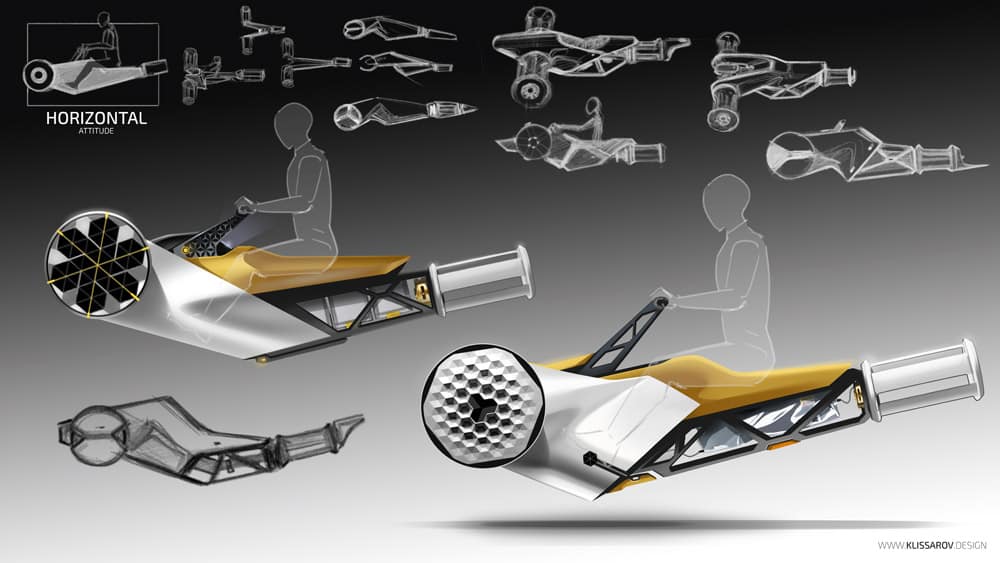

Cutaway showing driving position, drive and stabilisation.
PBR have taken up the story at the point where ACRO is still a conceptual project, but even at this juncture, it’s already proving successful in showcasing the advantages of cycloidal rotor technology. A bracket above ‘Jetson’, Klissarov also told us that ACRO’s intended price point will likely fall within the 100–150K category. But when you consider the cost of even conventional craft these days, this hardly seems unreasonable.
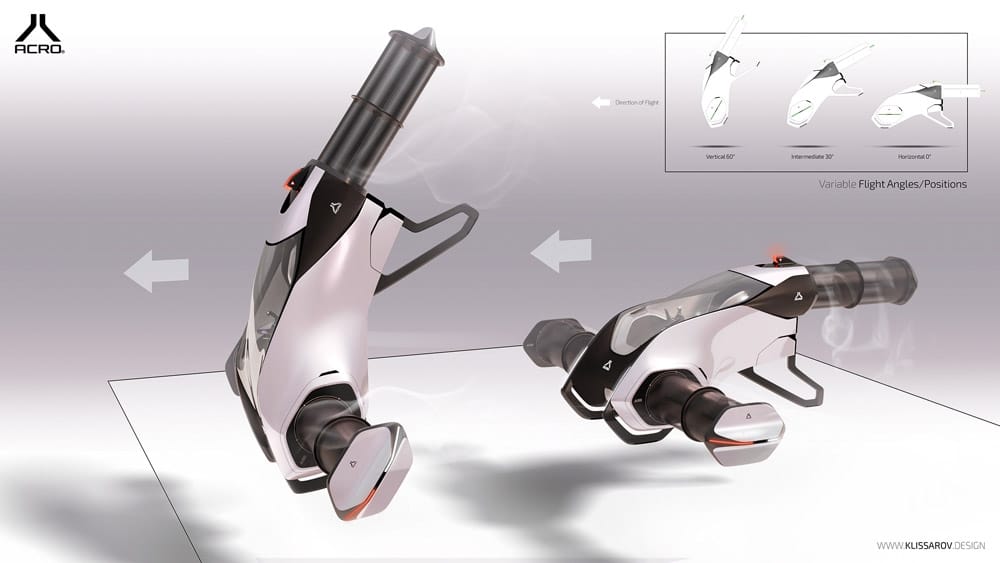

Ultra manoeuvrability afforded by cycloidal dynamics.
Despite still being at the drawing board stage, ACRO is already beginning to attract the attention of potential investors. Once these are secured, the project can be progressed to the next stage – that of actually building the physical prototype. If the car market is anything to go by, the length of time before the first seacraft begins to roll off the production line should be between three and four years from now.
Meanwhile, at this year’s Monaco Yacht Show, Klissarov Design launched their project, referring to it as a ‘new breed of recreational yachting experience’, and in turn describing it as ‘the ultimate 3D flight joy’ – one that promises to deliver ‘fun, aerobatic performance and an above-sea-surface experience like no other’.
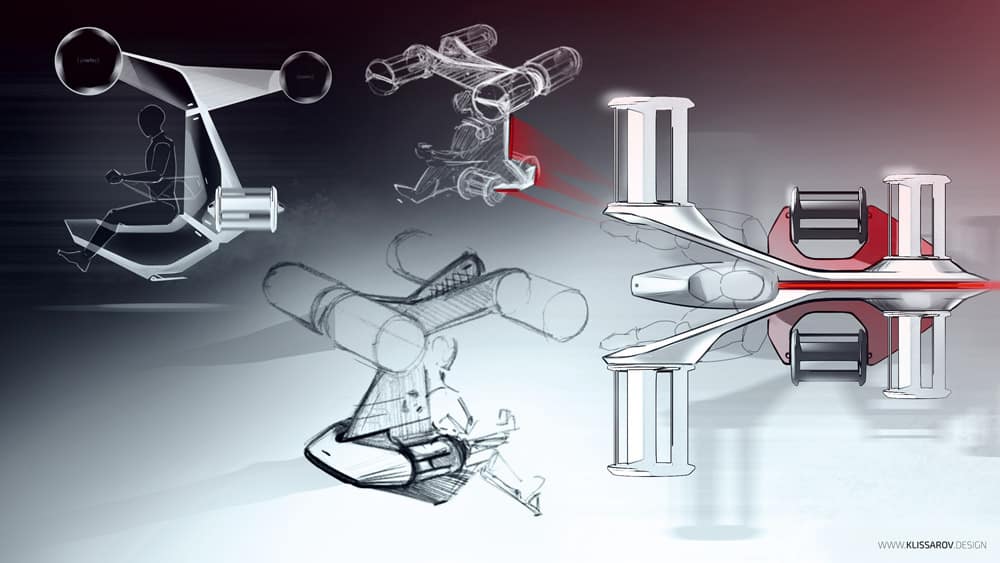

The ACRO seacraft’s propulsion system is based on a cutting-edge cycloidal rotor technology, which allows for full 360° thrust vectoring with exceptional manoeuvrability and stability. This new breed of craft is aimed at providing not only the ultimate flight enjoyment but a very high level of safety too. In addition, its design will afford the ability to land on the deck of its mother ship without the need for a helipad, and its versatility will be such that it will perform in most weather conditions and sea states. Being of electric propulsion, ACRO will benefit too from very low noise levels.
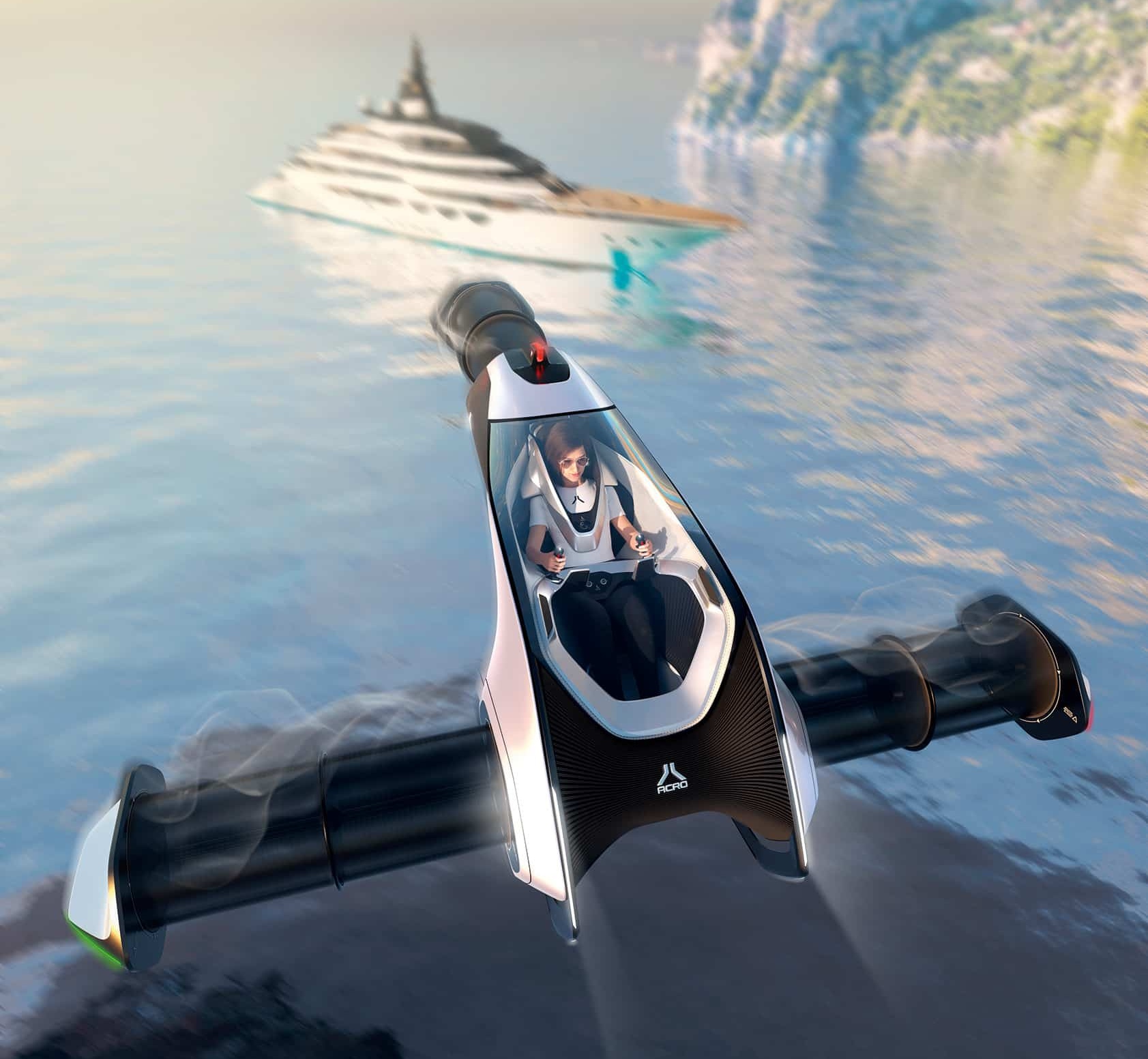

The maximum take-off weight equals the overall hover thrust at around 62% of the maximum overall thrust that each cyclorotor can provide.
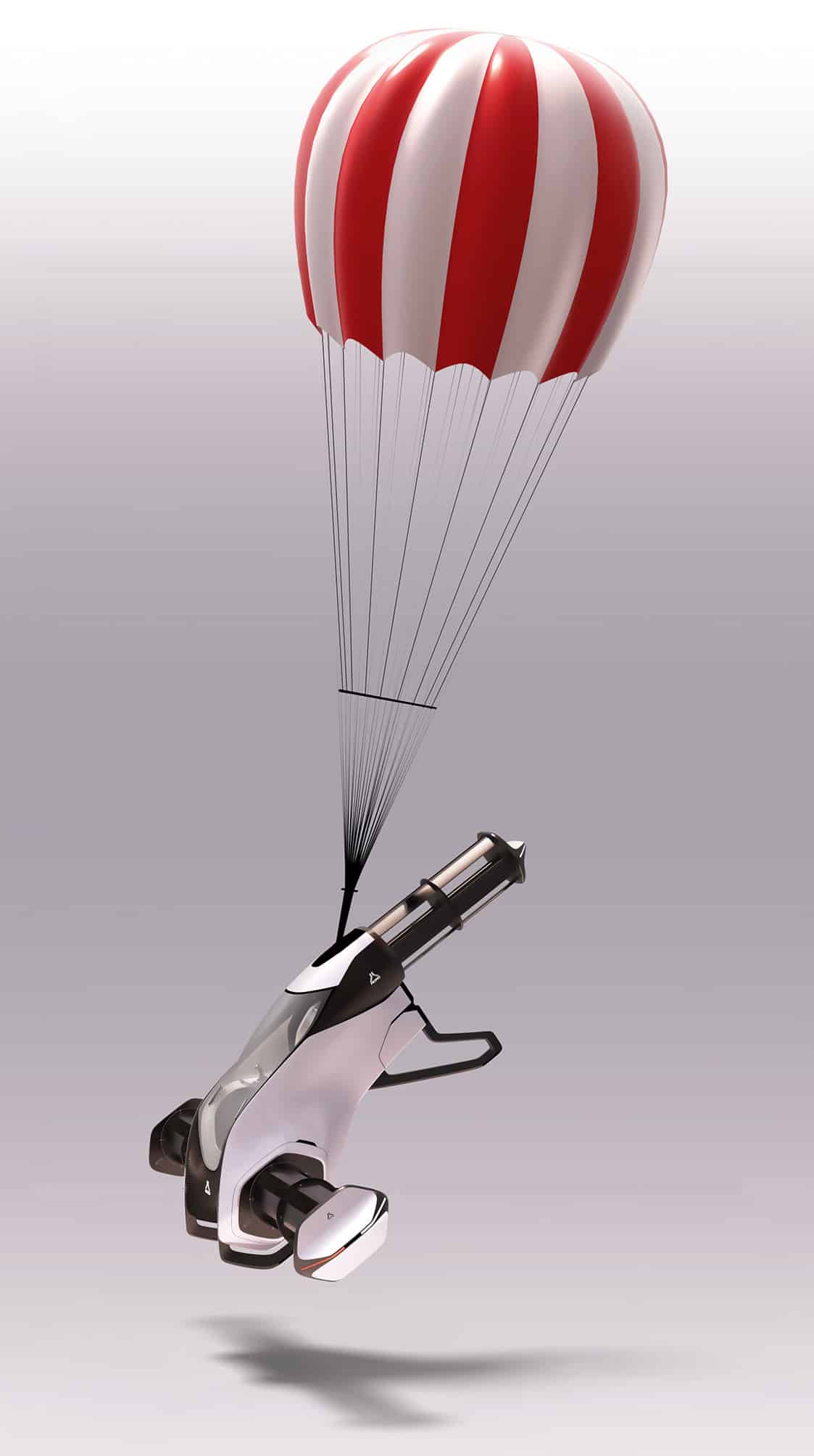
Rapid deployment parachute safety.
Based on an evolved and optimised CycloTech CR-60 cyclorotor, the set-up allows a redundancy of up to two simultaneous engine losses while the vehicle is still able to hover and land safely.
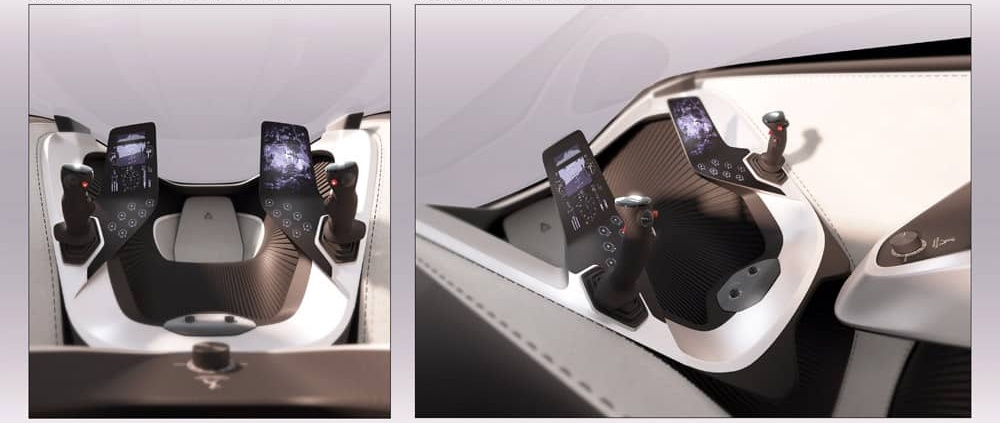

Dual Side- screens HMI for enhanced enviroment visibility. Dual joystick operation – No pedals required
A cyclorotor, cycloidal rotor, cycloidal propeller or cyclogiro is a fluid propulsion device that converts shaft power into the acceleration of a fluid using a rotating axis perpendicular to the direction of fluid motion. It uses several blades with a spanwise axis parallel to the axis of rotation and perpendicular to the direction of fluid motion. These blades are cyclically pitched twice per revolution to produce force (thrust or lift) in any direction normal to the axis of rotation. Cyclorotors are used for propulsion, lift and control on air and water vehicles. An aircraft using cyclorotors as the primary source of lift, propulsion and control is known as a ‘cyclogyro’ or ‘cyclocopter’. A unique aspect is that it can change the magnitude and direction of thrust without the need for tilting any aircraft structures.
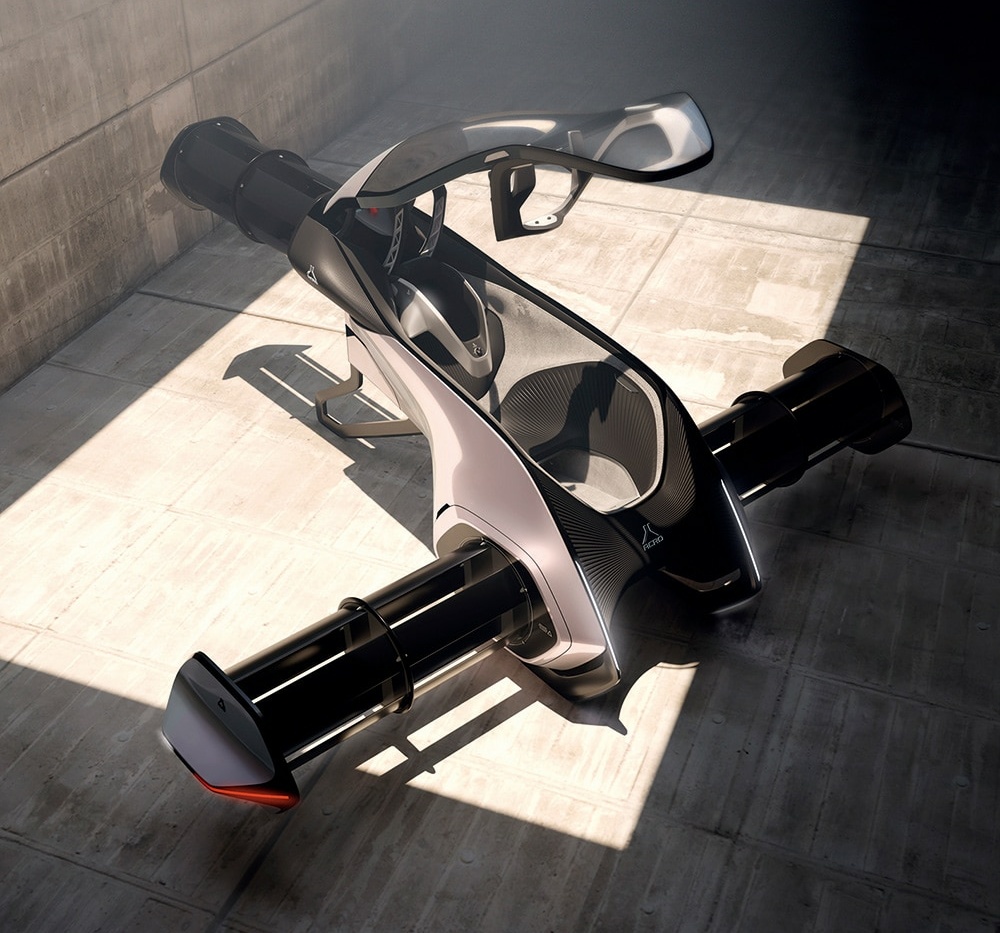

Emmanuel leads an independent vehicle design studio, based in the French Riviera, developing iconic vehicle design on land, air and sea. During the last 15 years he has helped shape the design of vehicles for a range of international brands, including Renault and Mercedes-Benz. Mastering cutting-edge design tools such as digital sketching and rendering, VR sketching and modelling, 3D hard surface modelling, rendering and animation, he brings a unique automotive design sensibility to projects in mobility design.
For more information see www.klissarov.design




Built for all weathers, this triple cabin 35 footer packs in the features. Greg Copp puts her to the test.


Across the season’s boat shows — from Southampton to Cannes and Genoa — one theme stood out: innovation is thriving,…
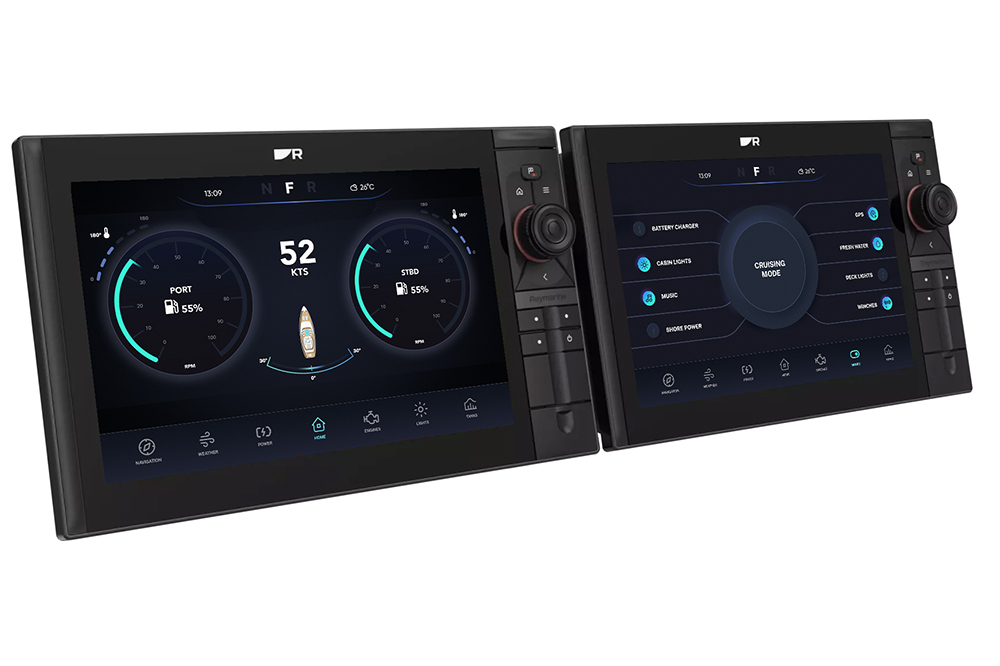

Raymarine expands the capability of its Axiom MFDs through new collaborations with Maretron and WATCHIT, delivering enhanced vessel control, advanced…
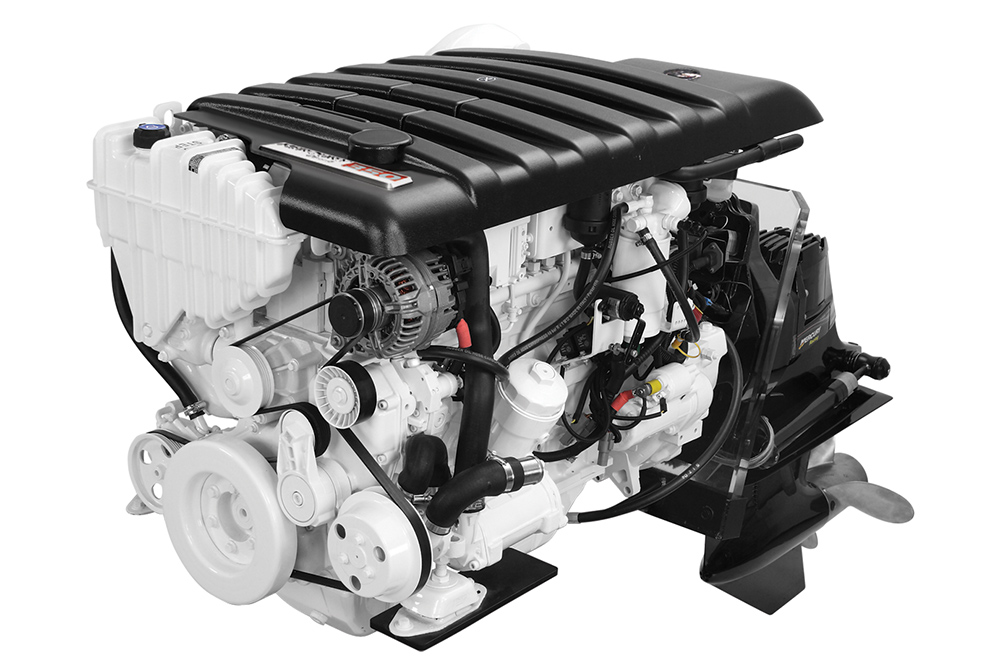

Mercury Marine unveiled the updated 4.2L diesel engine, now RCD II compliant and HVO capable. Lighter, cleaner, and easier to…